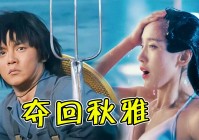Skijump Challenge 2001
Skijump Challenge 2001 was originally released for the PC and Xbox in September. It made several appearances on a Nintendo 64 near you in 2001.
In Skijump Challenge, you are given the task of taking down a collection of low-level monkeys with at least 50 different bananas. You must follow a series of riddles to take out the monkeys and unlock new costumes and other goodies for you. You have four different types of monkeys to choose from, and the game's levels are huge, spanning such cities as London, Paris, and London.
The developers of the game showed off a first-person shooter from G4TV. There's also an action-adventure game from Oddworld Inhabitants in which you will play a young monkey who seeks revenge on a rival monkey. The game is based on the gameplay from Oddworld Inhabitants' Oddworld: Abe's Oddysee. The game features an enhanced version of the audio and visual effects from the first game and includes a much more realistic 3D engine that lets you play the game in a first-person perspective. In addition, the game's levels are modeled after scenes from the original PlayStation game and feature jungle, wind, and rain effects.
While the game's graphics are a bit dated by today's standards, they are looking good. The game's action is a mix of action and puzzle-solving, and the levels feature plenty of unique puzzles and challenges that require quick reflexes. The music in the game also features some impressive tunes that play during the levels.
The audio in the game is well done and has a distinct feel to it. Oddworld Inhabitants did an impressive job with the game's audio, as the voices are well done and aren't as clunky as they were in the first game. The sound effects are also pretty solid, and they are fairly memorable as well. The sound effects and music complement the game surprisingly well, especially when it comes to boss battles.
NHL: The GameCube game's graphics have been a bit aged. The audio is still as impressive as it was in the PlayStation game and is still very impressive for a GameCube game. The action is a bit dated for a GameCube game, but the audio effects are not that bad either.
NHL: The GameCube game features some of the best music the series has seen to date.
On the other hand, NHL: The GameCube game's sound is a bit dated. You'll hear plenty of typical sound effects such as spins and the whine of boards. The audio is slightly less impressive, as it lacks some of the bells and whistles found in the PS2 game. The announcer is also somewhat flamboyant, although he does speak sometimes.
The GameCube version of NHL: The Game has some issues when it comes to visuals. The game does still appear to look fine on the GameCube, but the visuals and audio are what draw you in. While the Xbox version is definitely the best looking game out there, the PS2 version has some nice texture work done to the stadiums and crowd, and the lighting effects are appropriately blown out for the PlayStation 2 game.
The audio in the GameCube version of NHL: The Game is comparable to the Xbox version of the game, but the audio effects aren't as good as the Xbox version. The audio in the GameCube version is comparable to the Xbox version. The main feature of the GameCube version, however, is its audio. EA Sports and EA Sports have managed to squeeze a lot more audio into the GameCube version of NHL: The Game than there is in the Xbox game. In addition to a great lineup of music, it's great to hear NHL players that you've not seen before.
You'll notice that NHL 2004's gameplay is a big step up from the first game.
The GameCube version of NHL: The Game contains two control schemes. The first is more or less the same, but the second has been tweaked slightly. In addition to the regular pass button, you can switch between the two at will. It's a little like the shoulder buttons in NHL 2002, but with analog stick functionality. You can also turn the stick off entirely, but you can only do this when you're controlling the goalie. This control scheme is pretty intuitive, and as a result, the left analog stick is used to shoot and pass, while the right analog stick is used to shoot. The setup works well, and as it is, the analog stick is used to call plays, or click to switch players. The one new control option is the ability to create a series of plays that are then edited. You can use any one of the plays as a shortcut to a play. You can change any of the plays or watch them on the fly as your created plays becomes play.
Once you've set up a play, you can jump into a replay of the first match, and then you can also watch the replay.
-
上一篇
Skyfighters 1945 -
下一篇
Ski Resort Tycoon
相关推荐
评论列表
暂无评论,快抢沙发吧~



欢迎 你 发表评论: